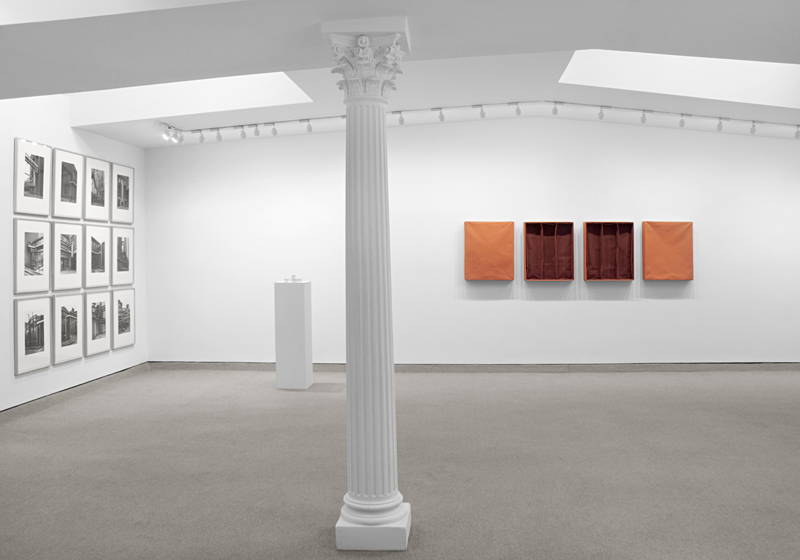
ADDITIVE LOGIC:
Bernd & Hilla Becher, Mel Bochner, Dan Flavin, Sol LeWitt, Kay Rosen, Ed Ruscha, Richard Tuttle, Franz Erhard Walther
Each of the works in the current exhibition, “Additive Logic” require something from a viewer. They offer opportunities, but also each request something – whether it be challenging one’s assumptions, close inspection, direct physical contact, or using the information displayed as a launching point for further visualization. Among the eight works in the show, four are described below to give the reader a sense of what this means.
Bernd & Hilla Becher spent their entire career photographing industrial structures in Europe and North America. They didn’t have “periods”. They had one massive project lasting nearly five decades. Their constant goal was to present photographs (usually in grids) of the architectural forms of industry. This emphasis on form is most crucial in the Bechers’ work. The photographs were taken under overcast skies to avoid shadows and from the same perspective. They did not want anything to distract from the pure form of the structures, which are thus elevated to the level of sculpture. The Bechers have made direct reference to this connection by titling an early show “Anonymous Sculptures”, and when their work won an award at the Venice Biennale in 1991, it was actually in the sculpture category. In addition to form, the Bechers’ work engages the issue of memory. They were interested in the speed at which technology evolves, leaving old innovations in the dust, often to be destroyed. They worked actively to preserve memories of these structures by photographing them and, on numerous occasions, photographing one end of a factory while it was being torn down at the other end. This memory, though, has neither nostalgia nor sentimentality. The photographs’ consistently straightforward style prevents the injection of emotion into any of the images. As viewers, we have no idea if the factory in front of us still stands today or was leveled years ago, and thus we are left with much work to do (compare, examine, explore, etc.) and much that cannot be done (know) and thus our viewing of the Bechers’ work has an aura that is within the work, as well.
Richard Tuttle’s 2014 work, “Temporary”, looks like a casually arranged group of cubes of wood. Unbeknownst to a quick viewing, whenever it is exhibited, “Temporary” will always look the same, as the arrangement is dictated by a specific template used to create the exact arrangement.
Franz Erhard Walther’s “Die Verlangsamung der Bilder (Werk Nr. 10)” consists of two wall mounted objects. Each object consists of a ‘back’ and a ‘front’. Each ‘back’ has sides, a back and internal forms, almost as if it were the bottom of a box with dividers inside. Each ‘front’ serves as a ‘cover’ of sorts, but can be exhibited ‘open’ or ‘closed’. Somewhere between sculpture, prop, furniture and installation, “Die Verlangsamung der Bilder (Werk Nr. 10)” has a myriad ways of being installed.
Mel Bochner’s “Primer” employs a compendium of text and images that deal with ideas concerning medium specificity. It documents a series of installations executed between 1969 and 1972, which were based in turn upon earlier drawings that comprised Bochner’s “Theory of Sculpture” series. Accordingly, each of the 21 screenprints illustrates a previously realized arrangement of chalk and stone. The printed format here introduces a third element – information regarding the title and medium of the work featured on each sheet – which does not appear in the original installations. For example, in the print series, “Plane” marks three equidistant units, numbered 1, 2, and 3, and notes the use of hazelnuts on floor as opposed to stones. “Primer” exists both as a work in its own right and as a document of a previous artwork. Bochner’s original idea drew inspiration from the Italian word ‘abecedario’, or ‘primer,’ an elementary tool used to teach the letters of the alphabet. “Primer” transfers the notion of basic education from the building units of language to the fundamental premises of sculpture explored in “Theory of Sculpture”.
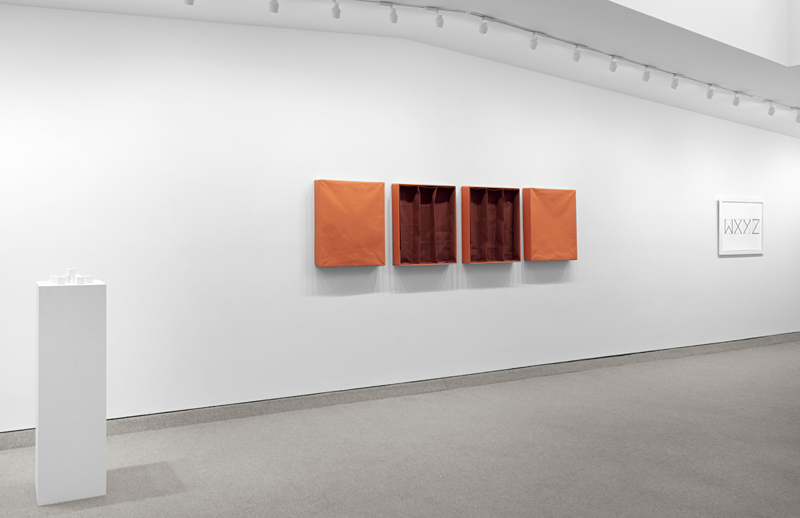
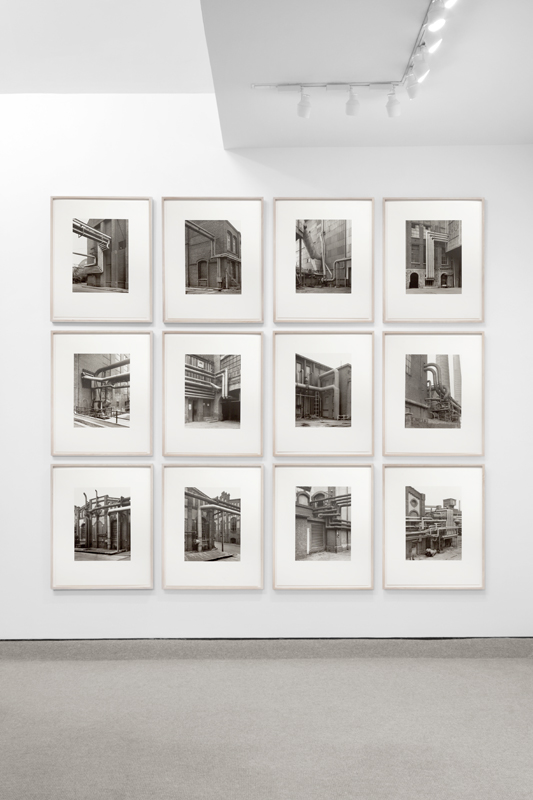
Image size: 15 3/4 x 11 7/8 inches each (40 x 30.2 cm each)
Paper size: 24 3/4 x 19 1/2 inches each (62.9 x 49.5 cm each)
Frame size: 26 7/8 x 21 5/8 inches (68.3 x 54.9 cm)
Edition of 100
Signed and numbered on reverse on each sheet
(Inventory #27491)
Image size: 15 3/4 x 11 7/8 inches each (40 x 30.2 cm each)
Paper size: 24 3/4 x 19 1/2 inches each (62.9 x 49.5 cm each)
Frame size: 26 7/8 x 21 5/8 inches (68.3 x 54.9 cm)
Edition of 100
Signed and numbered on reverse on each sheet
(Inventory #27491)
accompanied with a drawing, diagram and certificate
27 1/2 x 23 1/2 x 4 1/2 inches each (69.9 x 59.7 x 11.4 cm each)
Inscribed ‘Arbeit nr. 10, Kasten: Orange’, and ‘Formen:Gebrannte Umbra’ on the drawing
(Inventory #27390)
accompanied with a drawing, diagram and certificate
27 1/2 x 23 1/2 x 4 1/2 inches each (69.9 x 59.7 x 11.4 cm each)
Inscribed ‘Arbeit nr. 10, Kasten: Orange’, and ‘Formen:Gebrannte Umbra’ on the drawing
(Inventory #27390)
3 x 12 x 12 inches (7.6 x 30.5 x 30.5 cm)
Edition of 15
Signed and numbered
(Inventory #27003)
3 x 12 x 12 inches (7.6 x 30.5 x 30.5 cm)
Edition of 15
Signed and numbered
(Inventory #27003)
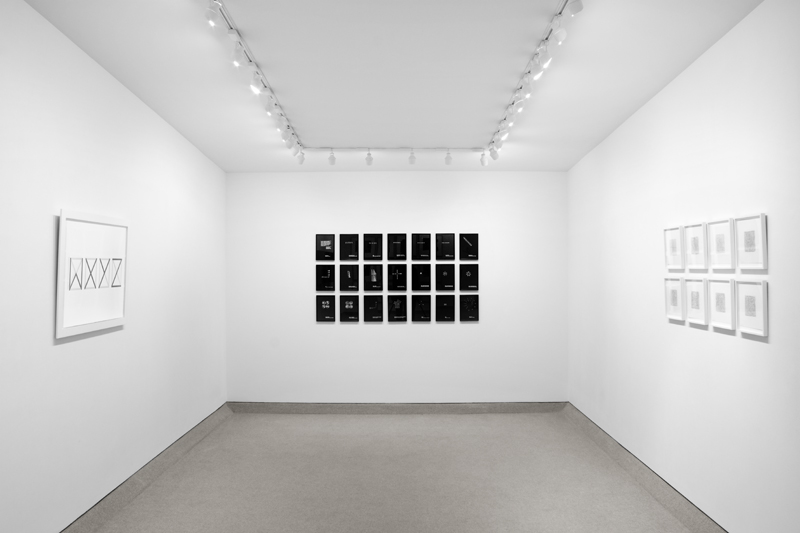
Image/paper size: 22 1/2 x 30 1/4 inches (57.2 x 76.8 cm)
Signed and dated on reverse, lower right
(Inventory #27349)
Image/paper size: 22 1/2 x 30 1/4 inches (57.2 x 76.8 cm)
Signed and dated on reverse, lower right
(Inventory #27349)
Image paper size: 9 7/8 x 6 15/16 inches each (25.1 x 17.6 cm each)
Edition of 50
Signed, numbered and dated lower right on colophon
(Inventory #27480)
Krakow Witkin 1995.07
Image paper size: 9 7/8 x 6 15/16 inches each (25.1 x 17.6 cm each)
Edition of 50
Signed, numbered and dated lower right on colophon
(Inventory #27480)
Krakow Witkin 1995.07
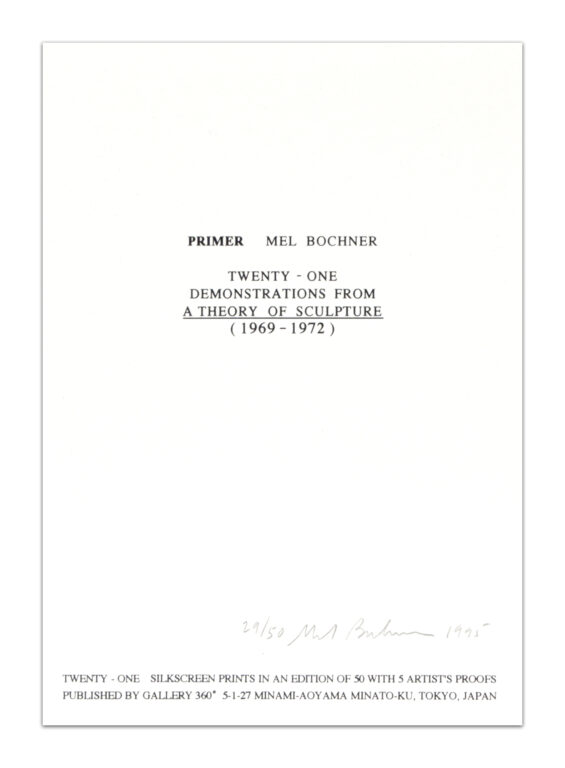
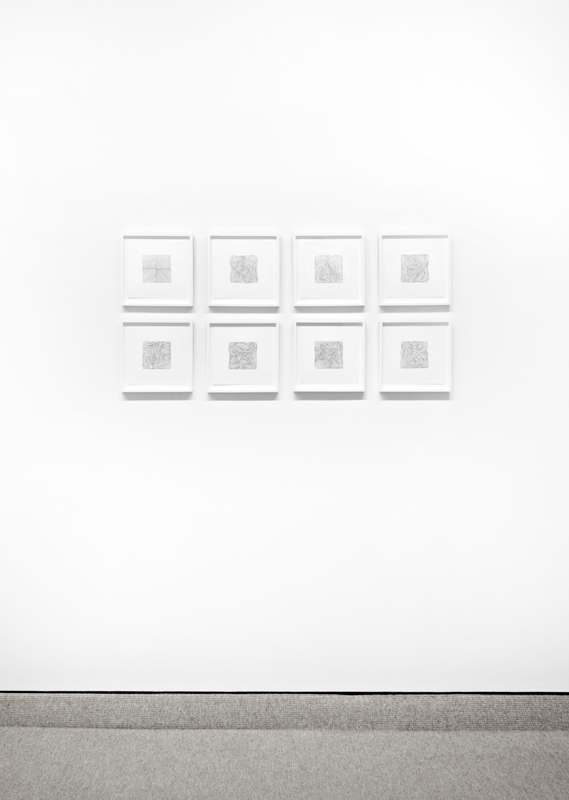
Edition of 20, TP C
Signed “LeWitt” and numbered “TP C” lower left
Image size: 4 x 4 inches each (10.2 x 10.2 cm each)
Paper size: 8 x 8 inches each (20.3 x 20.3 cm each)
Frame size: 10 1/4 x 10 1/4 inches each (26 x 26 cm each)
(Inventory #17372)
Krakow 1999.24
Available as a complete set only
Edition of 20, TP C
Signed “LeWitt” and numbered “TP C” lower left
Image size: 4 x 4 inches each (10.2 x 10.2 cm each)
Paper size: 8 x 8 inches each (20.3 x 20.3 cm each)
Frame size: 10 1/4 x 10 1/4 inches each (26 x 26 cm each)
(Inventory #17372)
Krakow 1999.24
Available as a complete set only
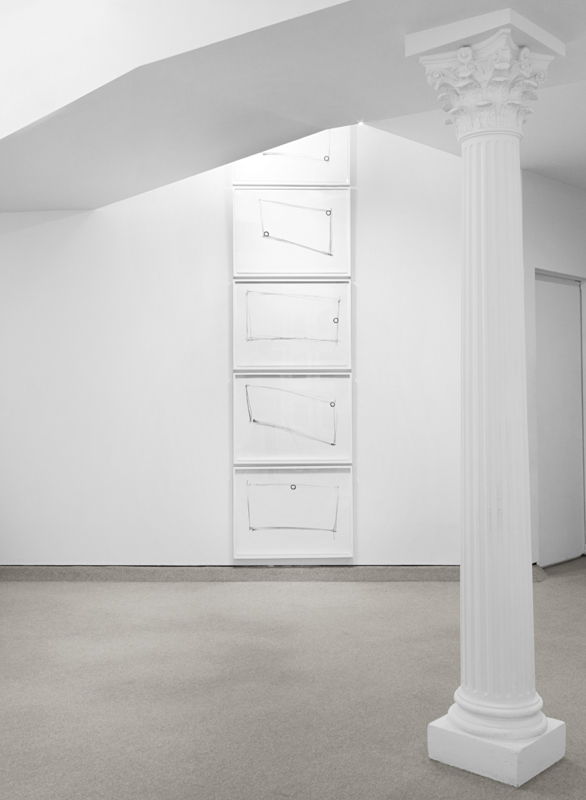
Edition of 35
Signed, titled and dated lower center on each sheet
Image/paper size: 22 1/8 x 30 inches each (56.2 x 76.2 cm each)
(Inventory #24517)
Edition of 35
Signed, titled and dated lower center on each sheet
Image/paper size: 22 1/8 x 30 inches each (56.2 x 76.2 cm each)
(Inventory #24517)

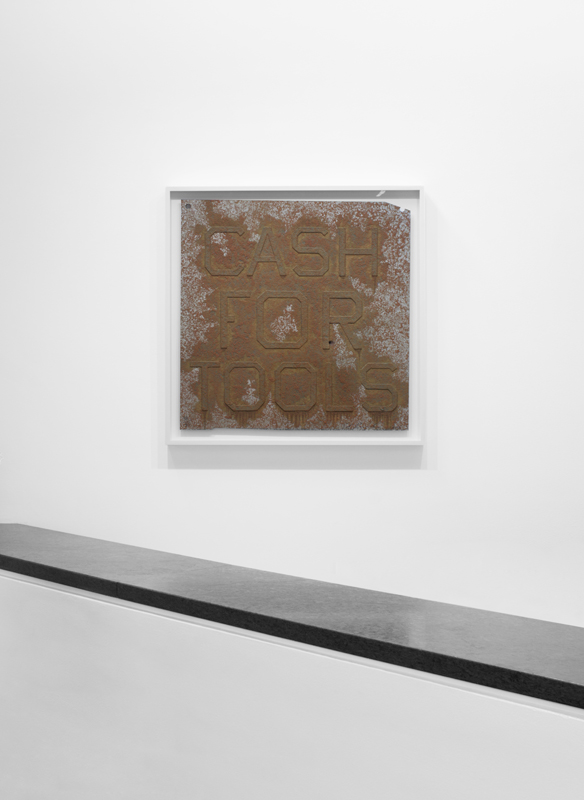
Image/paper size: 24 x 24 inches (61 x 61 cm)
Frame size: 27 1/8 x 27 1/8 inches (68.9 x 68.9 cm)
Edition of 50
Signed and dated lower right, numbered lower left
(Inventory #26957)
Image/paper size: 24 x 24 inches (61 x 61 cm)
Frame size: 27 1/8 x 27 1/8 inches (68.9 x 68.9 cm)
Edition of 50
Signed and dated lower right, numbered lower left
(Inventory #26957)
No results found.
10 Newbury Street, Boston, Massachusetts 02116
617-262-4490 | info@krakowwitkingallery.com
The gallery is free and open to the public. Please note our summer schedule:
June
Tuesday – Saturday, 10–5:30
(Open on Juneteenth)
July 1–25
Tuesday – Friday, 10–5:30
(Closed Friday, July 4)
July 29 – September 1
Open via appointment
Beginning September 2
Tuesday – Saturday, 10–5:30